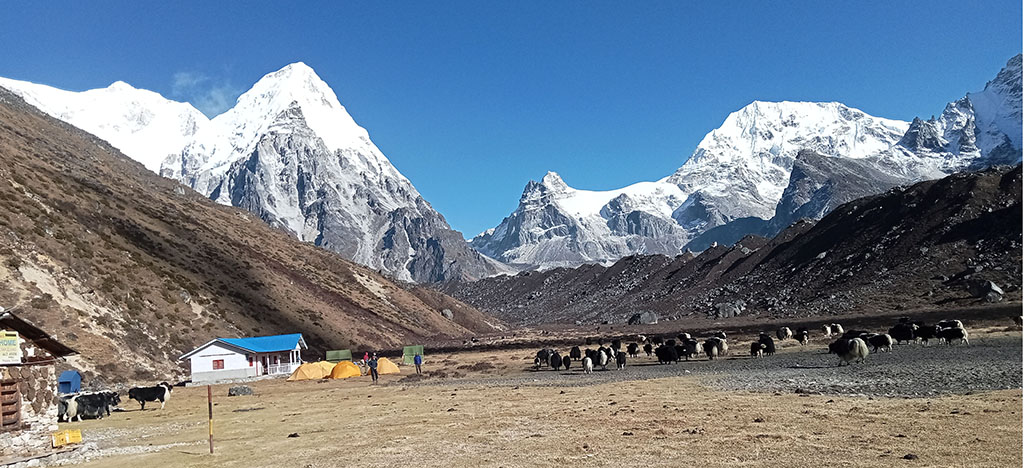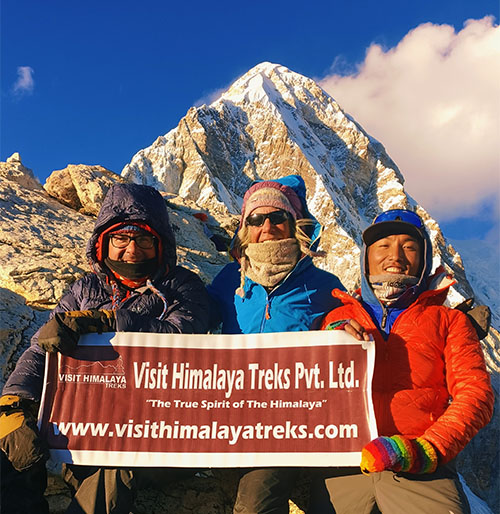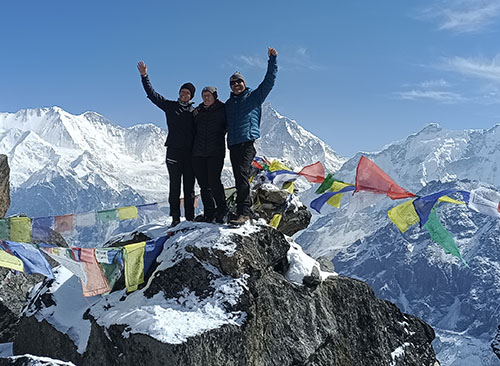Discover the ultimate Kanchenjunga Base Camp Trek Package with Visit Himalaya Treks. Explore a detailed itinerary, permit requirements, cost, and the best time to trek this remote Himalayan adventure. Experience unmatched natural beauty and culture on your journey to Nepal’s third-highest peak.
Embark on one of the most remote, demanding, and rewarding treks Nepal has to offer, the Kanchenjunga Base Camp Trek. For 26 days, you walk to the base of Mount Kanchenjunga (8,586 meters), the world's third-highest mountain, along the border of eastern Nepal and India's Sikkim state. Far from the Everest and Annapurna treks, this trek offers raw wilderness, untouched mountain valleys, and peeks at ancient cultures lightly touched by tourism.
Visit Himalaya Treks has crafted an in-depth and professionally backed package so that you can trek both Kanchenjunga South and North Base Camps with full logistics support, an experienced trekking team, acclimatization rests, and carefully chosen stops in authentic mountain villages. This isn't a trek, it's the full Himalayan experience for off-the-grid high-altitude adventure enthusiasts with the assurance of an experienced local operator.
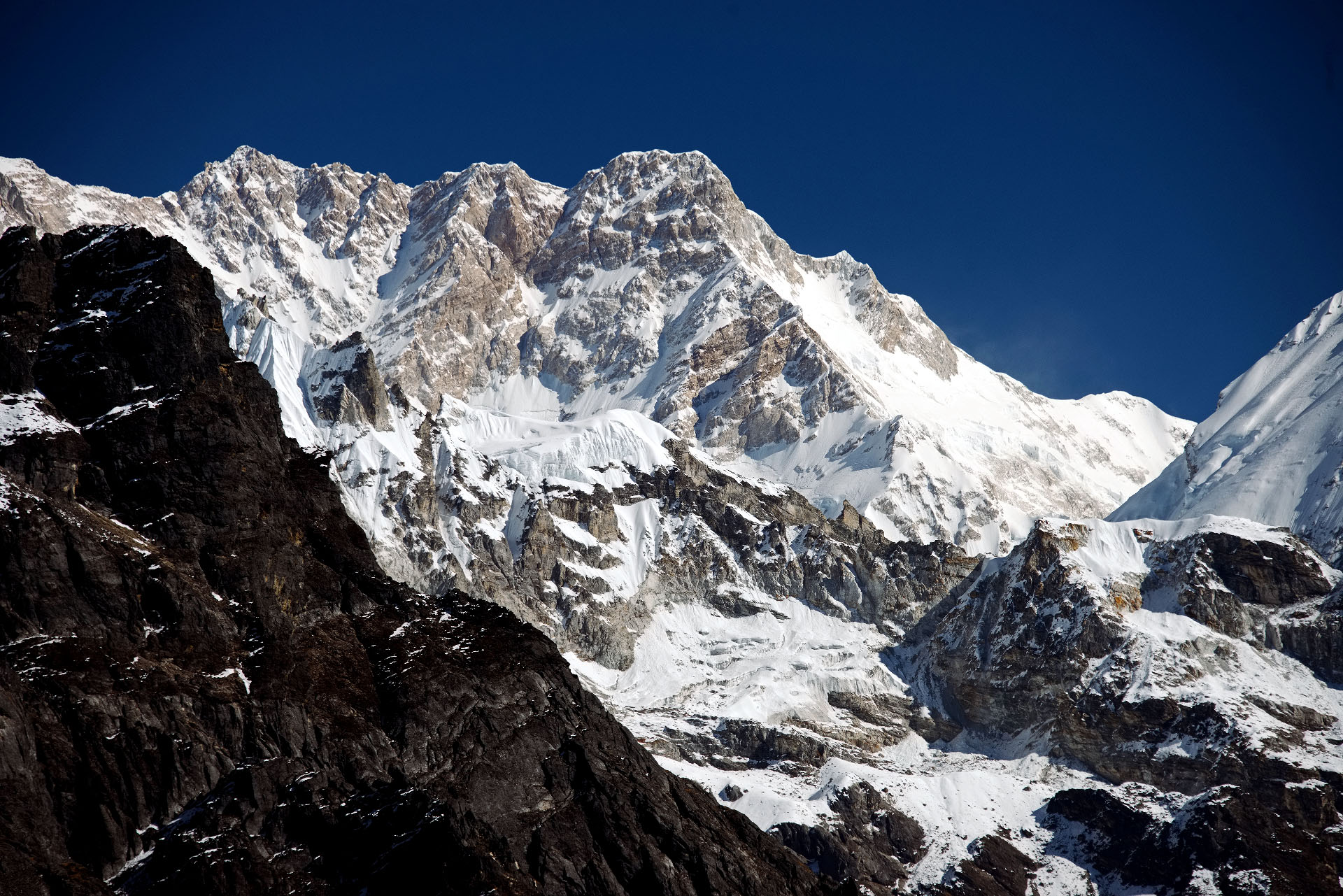
The world's third highest Peak, Mt. Kanchenjunga, 8586 meters, South view.
"Kanchenjunga Trekking in Nepal: More Than Just a Trek, It’s a Lifetime Experience."
Nepal is home to some of the world's most iconic trekking routes, but if you’re searching for a true wilderness experience, the Kanchenjunga Base Camp Trek stands in a class of its own. Located in the far-eastern corner of the country, bordering Tibet and India, the Kanchenjunga region is a Restricted Area, meaning few trekkers pass through its trails each year. The region is dominated by the Kanchenjunga Conservation Area (KCA), which supports habitats for endangered creatures including the snow leopard, red panda, Himalayan black bear, and blue sheep.
It is not just in far-off regions, but also a diversity of landscapes, including subtropical hills and tea gardens, alpine forests, glacial valleys, and enormous snow-capped mountains. The trek passes through typical Rai, Limbu, and Tibetan villages where time appears to have frozen. There are monasteries, mani walls, yak grazing pastures, and sacred caves for contemplation on the spiritual front, while the climb of Pang Pema (5,150 meters) and Oktang Viewpoint offers some of the finest views of the entire Himalayas.
The trek is strenuous and long, taking 26 days and traversing altitudes over 5,000 meters. But the itinerary that Visit Himalaya Treks has prepared has distributed rest days, acclimatization stops, and cultural interaction such that the physical exertion is in balance with the amount of bonding that is achieved with the region. With seasoned guides, porters, accommodation arrangements, and permits arranged for, this package seeks to make your Kanchenjunga dream trek as smooth, safe, and rewarding as possible.
If you are a frequent high-altitude traveler or a mountain lover who would like to go on an offbeat trek, the Kanchenjunga Base Camp Trek is an experience of a lifetime in the Himalayas, and with Visit Himalaya Treks, you're in the right hands to do it.
Best Time for Kanchenjunga Base Camp Trek.
Autumn, i.e., end of September to mid-December, is the best advised and preferred season to undertake this trek. After the monsoon showers get over, the sky is clear, and there is a clear and sharp view of the majestic peaks such as Kanchenjunga and Janu Himal. The weather at that time is not too hot, especially at lower elevations, and hence trekking is comfortable. This season also has excellent photography opportunities with warm sunrises and sunsets. Even then, since it is very popular, booking flights and permits ahead of time would be ideal in order to secure your spot.
The spring months, i.e., March to May, are the second-best time to trek in the Kanchenjunga area. The time is characterized by the blooming of rhododendrons and wildflowers, and paints the lower forests as well as valleys with shades of colors. The temperatures begin to get warmer slowly, and the climate is stable with clear mornings, while there could be some afternoon clouds. Snow on the higher passes begins to melt, so it's less difficult to cross compared to winter. Spring trekking is also less crowded than in autumn, allowing for a more peaceful experience on the trail.
It is not generally advisable to trek from December to February, winter, or from June to mid-September, monsoon. In the winter, the snow is deep and has the potential to close off high passes such as Sele La, and the harshly cold temperature, often below -20°C in the higher camps, can prove hazardous. There can also be a shortage of accommodations for the same reasons. During the monsoon season, frequent rains render trailways muddy and slippery, and there is a higher risk of landslides on lower slopes. The dense cloud cover at this time also obscures mountain vistas, and forested regions are infested with leeches.
For trekkers planning to schedule their Kanchenjunga Trek, the most suitable time slots are late September to mid-December and March to May. These are the periods that offer the best combination of favorable weather, accessibility, and sheer natural beauty, and make your trekking adventure both safe and enjoyable.

Camp at Kanchenjunga South Base Camp, Ramche, 4615 meters, Rathong and Kabru IV view.
What’s Included in the Kanchenjunga Base Camp Trek Package?
- Airport arrival and departure transfers in Kathmandu by private vehicle.
- Full-day Kathmandu sightseeing tour with licensed city guide and private transport (visiting Swayambhunath, Boudhanath, Pashupatinath, and Kathmandu Durbar Square).
- Three nights’ hotel accommodation in Kathmandu on a twin-sharing basis with breakfast (2 nights before the trek and 1 night after).
- Domestic flights: Kathmandu to Bhadrapur and return.
- All ground transportation by private jeep: Bhadrapur to Taplejung to Suketar and back.
- All meals (breakfast, lunch, dinner, tea, and coffee) during the trek.
- Accommodation in local tea houses throughout the trek.
- All required trekking permits:
- Kanchenjunga Restricted Area Permit.
- Kanchenjunga Conservation Area Permit (KCAP).
- TIMS (Trekkers' Information Management System) card.
- Licensed, experienced government-certified trekking guide.
- Porter support (one porter for every two trekkers, carrying a total of 25–30 kg).
- Guide and porters’ wages, accommodation, meals, insurance, and transportation.
- Airfare for trekking guide (Kathmandu–Bhadrapur–Kathmandu) and land transport for porters.
- Gear for porters (warm jacket, trousers, and trekking shoes).
- Basic first-aid medical kit.
- Government taxes and official service charges.
What’s Not Included in the Kanchenjunga Base Camp Trek Package?
- Nepal entry visa fees (can be obtained on arrival).
- Entrance fees for heritage sites during Kathmandu sightseeing.
- Personal travel insurance (must cover high-altitude trekking and emergency evacuation).
- Lunch and dinner in Kathmandu before and after the trek.
- Bottled water, hot showers, and soft or alcoholic beverages on the trek.
- Personal expenses such as laundry, telephone, and internet use on the trail.
- Tips and gratuities for trekking staff, guides, porters, and drivers.
The Original version of the Kanchenjunga Base Camp Trek short Itinerary;
Day 1: Arrive Kathmandu (1,350 meters)
Day 2: Sightseeing and Trek Preparation.
Day 3: Fly to Bhadrapur (91 meters) and drive to Kanyam (1,636 meters)
Day 4: Drive to Suketar (2,420 meters) and Trek to Lali Kharka (2,265 meters)
Day 5: Trek to Kade Bhanjyang (2,130 meters)
Day 6: Hike to Phumphe Danda (1,858 meters)
Day 7: Trek to Sherpaguan (1,678 meters)
Day 8: Trek to Torongton (2,995 meters)
Day 9: Hike to Tseram (3,870 meters)
Day 10: Acclimatization Day at Tseram.
Day 11: Trek to Ramche (4,615 meters)
Day 12: Trek to Oktang Viewpoint and Back to Tseram (3,870 meters)
Day 13: Trek to Sele La (4,290 meters)
Day 14: Trek to Ghunsa (3,475 meters)
Day 15: Trek to Kambachen (4,225 meters)
Day 16: Side Trip to Janu Himal Base Camp (4,500 meters)
Day 17: Ascend to Lhonak (4,815 meters)
Day 18: Trek to Pang Pema (5,150 meters)
Day 19: Side Trip to Viewpoint Domo Ri and Return to Lhonak.
Day 20: Return Hike to Ghunsa.
Day 21: Hike to Gyabla (2,725 meters)
Day 22: Hike to Amjilosa (2,510 meters)
Day 23: Hike to Ranipul and Drive to Taplejung (1,820 meters)
Day 24: Drive to Kanyam Tea Garden and Overnight at Kanyam.
Day 25: Drive to Bhadrapur and Fly Back to Kathmandu.
Day 26: Departure.
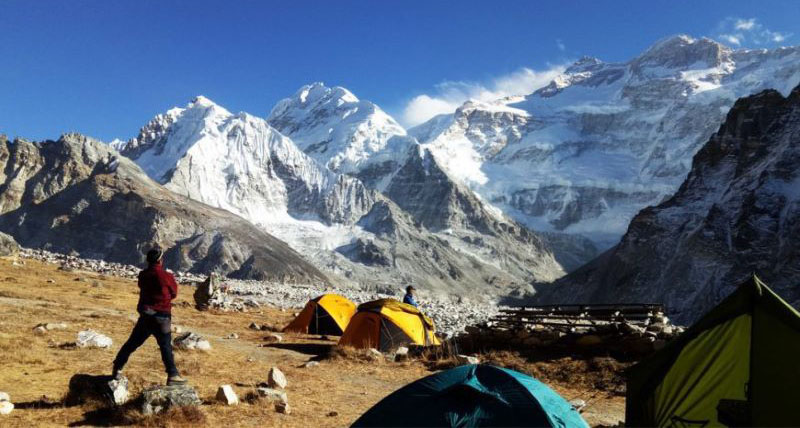
Camp at Kanchenjunga North Base Camp, Pang Pema, 5150 meters & Kanchenjunga North View.
Difficulty of Kanchenjunga Base Camp Trek.
The Kanchenjunga Base Camp Trek is rated as one of the most challenging and remotest treks in Nepal. Compared to more popular routes in the Everest or Annapurna region, this trek requires greater endurance, strength, and ingenuity. Trekkers should be prepared for long walking days, typically 6 to 8 hours of hard going, and limited access to urban comforts.
The trek traverses virgin landscape and remote villages, where accommodation is basic and communication is poor. The challenge is also increased by the extended duration of the trek (max 26 days) and remoteness, which means that in case of an emergency, evacuation processes are more limited. This trek is best suited for experienced trekkers with skills in multi-day mountain trekking.
Altitude: Prolonged Exposure above 3,500 Meters.
The second feature of the Kanchenjunga trek is prolonged exposure at high altitude. The summit of the trek is reached at Pang Pema (5,160 meters), which is the North Kanchenjunga Base Camp. However, several other camps along the trek, such as Ramche (4,615 meters), Lhonak (4,815 meters), and Sele La Pass (4,290 meters), are also high-altitude camps, and therefore acclimatization becomes essential.
The trek has also been carefully planned with rest and acclimatization days included along the way, for example, at Tseram and Lhonak, so that your body has time to adjust to the thin air. Having said that, trekkers must still remain watchful for signs of Acute Mountain Sickness (AMS). It's important to pay attention to your body, drink plenty of water, and also keep to the guide's advice during the trek.
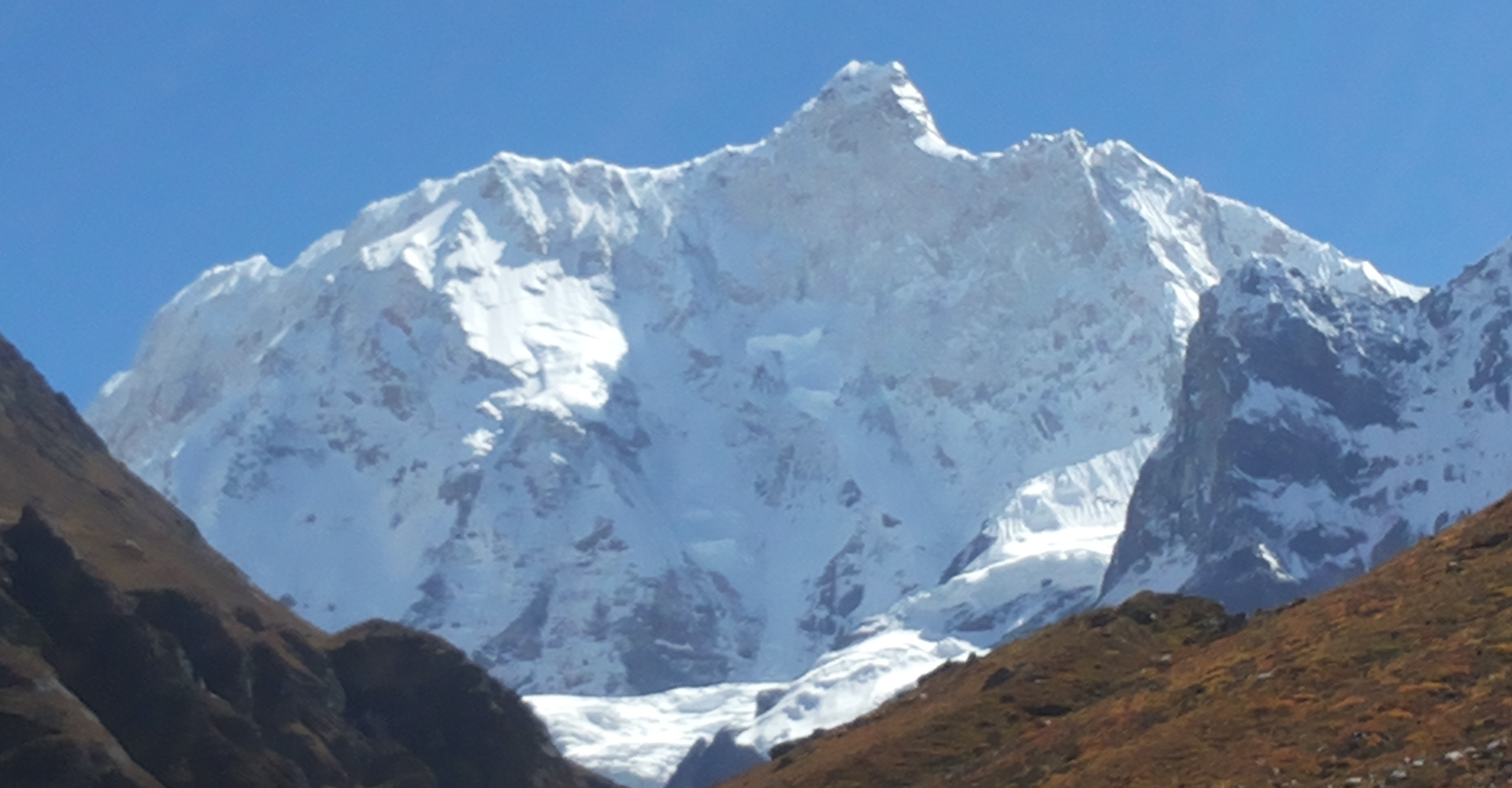
Janu Himal, also known as Kumbhakarna, is 7710 meters.
Fitness Requirements for Kanchenjunga Base Camp Trek.
Due to the combination of altitude, terrain, and duration, the Kanchenjunga Base Camp Trek is a physically demanding trek. It does not mean you have to be an Olympic athlete, but you should have good cardiovascular endurance, muscular endurance, and mental endurance. You must be capable of walking 6–8 hours a day for over three weeks, whether it snows or rains, and on uneven or steep terrain, which is the bare minimum. You’ll also need to carry your personal daypack, though porters will carry the heavier luggage.
Physical preparation must begin at least 2–3 months before the trek. Regular hiking, running, cycling, and strength training (particularly for the legs and core) will build up the endurance needed for the trail. Short treks at altitude, if possible, before your Kanchenjunga trek, to observe how your body reacts at altitude. Mental preparation is also necessary. The rugged isolation and austerity of the region require flexibility and patience when accommodations are basic and the weather is variable.
Summary of the Kanchenjunga Base Camp Trek Package.
The Kanchenjunga Base Camp Trek is not a trek; it's an expedition into one of the most remote, culturally rich, and scenically compelling parts of the Himalayas. From green tea plantations and subtropical valleys to high-altitude glaciers and heavenly mountain views, this trek offers unrivaled diversity and depth for seasoned trekkers.
By choosing Visit Himalaya Treks, you get perfectly designed itineraries, seamless logistics, informed local guides, and sustainable trekking practices that contribute to conservation and communities.
If what you are seeking is a trek long and off the beaten path through the Himalayas, a trek filled with nature and culture, the Kanchenjunga Base Camp Trek is one you will never forget, one that will satisfy your soul, challenge your body, and provide memories that last an eternity.

